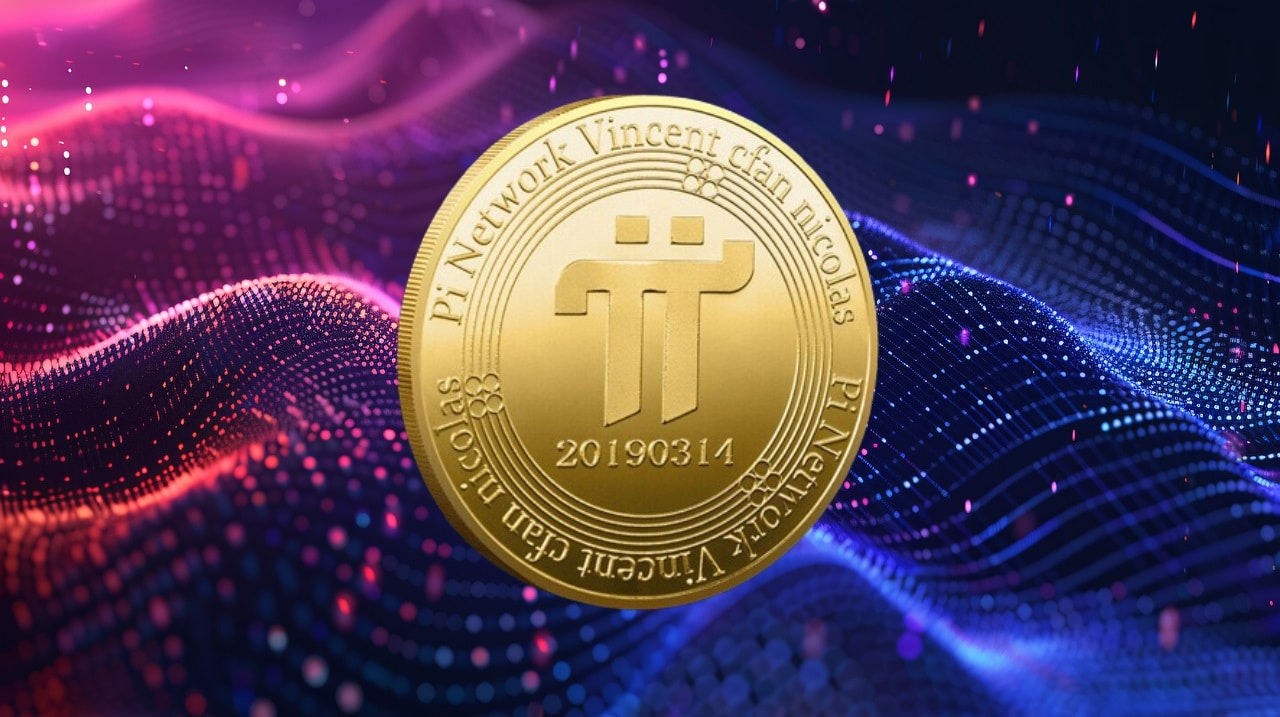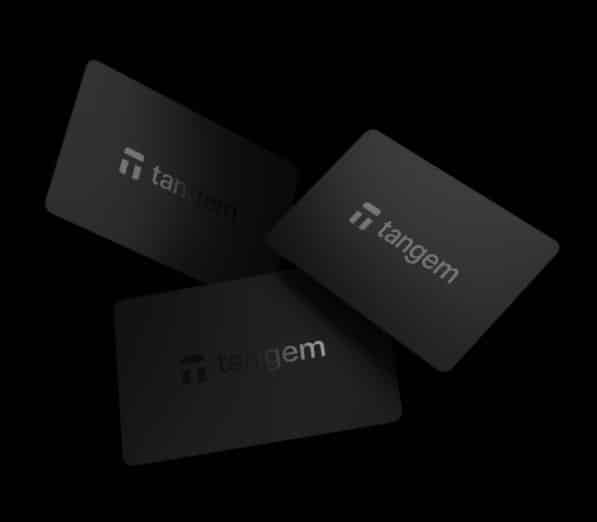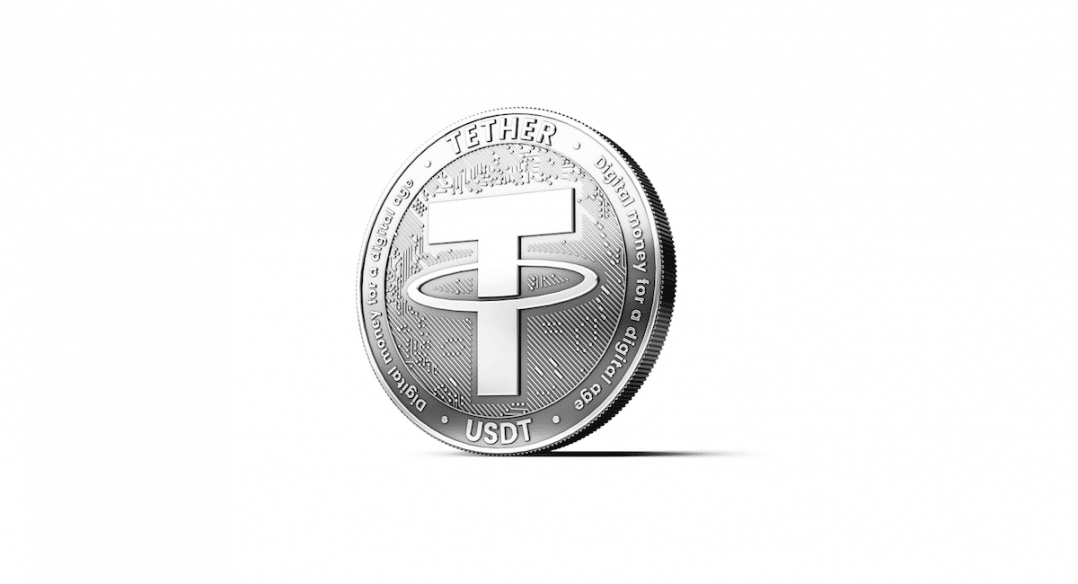Tether is one of the most popular stablecoins around today. In this post, I’ll explain what a stablecoin is, what Tether is and how it works.
Don’t Like to Read? Watch This Video Instead:
What is Tether Summary
Tether is a stablecoin that is pegged to different fiat currencies. USDT is pegged to the US Dollar and is issued by the company known as Tether. This allows traders to transfer the “fiat equivalent” in value between exchanges, without the need for normal fiat currency regulation.
There are serious concerns about the solvency of the company issuing Tether, which has been neither based nor disproven so far.
That’s Tether in a nutshell. For a more detailed review keep on reading, here’s what I’ll cover:
- What are Stablecoins?
- What is Tether?
- How Tether Works
- Tether Advantages
- Best Tether Wallets
- How to Buy Tether
- Tether Controversy
- Frequently Asked Questions
- Conclusion
1. Stablecoins in a nutshell
A Stablecoin is a cryptocurrency that is pegged to a real world currency, also known as fiat currency (e.g. the US dollar, Euro, etc.).
Stablecoins are issued by centralized companies that maintain the peg, either by putting up collateral or through some sort of algorithm that manipulates the stablecoin’s supply, depending on the demand.
Stablecoins allow exchanges to create fiat currency pairs without actually accepting fiat. For example, you can have a BTC/USDT trading pair which simulates the BTC/USD market without the need for regulation.
2. What is Tether?
Tether (₮) is a stablecoin pegged to fiat currencies. The most popular peg Tether uses is to the US Dollar (ticker symbol USDT).
1 USDT is intended to remain exactly equal to $1—not a cent more or less. It’s basically a crypto dollar (at least in value).
Another currency that Tether uses is the Euro, in the form of EURT.
It’s worth noting that Tether users are protected from the volatility of cryptocurrency, but they’re still exposed to fluctuations in the price of the pegged fiat currency.
For example, consider what would happen if a momentous event occurred that halved the value of the US dollar overnight. If you hold USDT, it would lose an equal amount of value as the USD.
The Tether Bitfinex Connection
Tether is directed by some of the same people behind Bitfinex: Philip Potter and Giancarlo Devasini. This leadership was confirmed by the Paradise Papers leak, although the news didn’t come as a surprise to anyone paying attention.
New Tether accounts flow mostly to Bitfinex. In April 2017, Bitfinex and Tether experienced a freeze of their fiat operations, when US Bank and Wells Fargo withdrew as banking partners.
As a result, Bitfinex now refuses US customers and it no longer provides markets denominated in USD. Rather, it exclusively uses USDT.
3. How Tether Works
At first, all Tether was based on the Omni Platform. This platform is used for various digital assets, which are anchored to the Bitcoin blockchain. Following Bitcoin, Ethereum based Tether coins were launched as well, which is now their most-utilized network. They haven’t stopped there, however, with Tether tokens now existing on 8+ blockchains including Tron, OMG Network and Solana.
The Tether peg is maintained through collateral. They claim that for every 1 USDT in existence, there’s a US Dollar worth of currency or other assets sitting in deposit.
For 1 USDT to be worth $1, it must be redeemable at any time for $1 of fiat currency. At present, USDT is only directly convertible to USD via a small number of exchanges or through Tether itself (which requires a $100K minimum and charges considerable fees).
To sum it up, for 1 USDT to actually be worth $1, Tether and exchanges must keep a reserve of dollars to back every USDT in existence.
4. Tether Advantages
Since the majority of mainstream interest in cryptocurrencies is due to their fluctuation in price, one might question the purpose of a cryptocurrency, which is predicated on maintaining a fixed price. No pumps, no dumps, no bubbles.
Owning Tether is more like a deposit in a (somewhat risky) bank account that pays 0% interest.
So if Tether is riskier than regular cryptocurrencies and provides no possibility of financial gains, why use it at all?
The reality is that Tether is extremely useful to traders and investors as an alternative to fiat. There are several good reasons why:
Transaction Times
USD deposits and withdrawals to and from foreign exchanges are often a time-consuming process. On average, they take 1 to 4 business days to complete. If the transaction occurs after banks have closed for the night, weekend, or holiday, wait times may be considerably extended.
By contrast, Tether transactions are completed in minutes. This benefit is significant because cryptocurrency traders often need to rapidly shift funds, and take advantage of arbitrage opportunities.
Transaction Fees
SWIFT (Society for Worldwide Interbank Financial Telecommunication) transfers are very expensive. They cost upwards of $20 in fees and average around $30.
Additionally, if you’re using a fiat currency other than those supported by the exchange, the banks will charge an extra foreign exchange conversion fee and percentage on the transfer.
By contrast, Tether charges zero transaction fees between Tether wallets, however standard blockchain network fees apply.
Price Stability
Cryptocurrencies are notorious for being volatile, and trading one volatile currency for another creates a great deal of complication and extra risk. That’s why a stable base currency is extremely useful.
To understand why, imagine the following scenario, which involves trading Bitcoin for Ethereum:
- You convert BTC to buy ETH
- ETH rises by 10%.
- You wish to make a profit and sell your ETH for BTC.
- While the trade is being processed, Bitcoin shockingly falls by 15%
Despite being correct about ETH’s direction, you would take a loss, due to the fall of BTC. By using USD₮, your sole concern is the price of Ethereum.
Staying on the Sidelines
Frequently, the best position to take in a market is no position at all. Let’s say you feel that a certain cryptocurrency price, which you own, is unsustainably high. Your best move, in this case, would be to cash out, then wait for a dip or crash to buy back in.
5. Best Tether Wallets

Ledger
The most secure way to keep your USDT safe would be in a hardware wallet. A hardware wallet keeps your coins offline making them impossible to steal unless someone gains physical access to the wallet.
Ledger has two wallet models that support Tether and over 1200 additional cryptocurrency assets. The Model S and Model X both offer USDT support, the main difference being that the Model X can be controlled from your mobile phone as well.
You can read my complete Ledger Nano X review here.
Trezor
TREZOR is another hardware wallet manufacturer that supports Tether. There are two models available from TREZOR – the TREZOR One and the TREZOR Model T. The Model T is the newer model featuring a touch screen.
TREZOR wallets are compatible with desktops only. You can my complete TREZOR Model T review here.
Best Wallet
Best Wallet is one of our top-rated multichain wallets with Tether USDT support. One thing we like about Best Wallet is the built-in DEX that allows for the trading and buying of cryptocurrencies directly from within the wallet, meaning users never have to give up control to a third party. You can learn about how to buy USDT in their article How to Buy USDT with Best Wallet.
Coinomi
Coinomi is a multicurrency, multiplatform software wallet that allows you to store over 1,500 cryptocurrency assets including USDT. The wallet is user friendly, with a built-in exchange function so you can exchange your current holding into USDT and back.
Coinomi is available for iOS, Android, Windows, Mac, and Linux. You can read my complete Coinomi review here.
Exodus
Exodus is a beautifully designed cryptocurrency software wallet that can hold over 100 different crypto assets, including Tether. Exodus is extremely recommended if you’re just starting out with crypto as it’s super beginner friendly.
Exodus is available for iOS, Android, Windows, Linux, and Mac. You can read my complete Exodus review here.
Tether
It’s important to note that Tether also supplies their own dedicated web interface for holding Tether. This interface isn’t highly recommended among Tether wallets due to the fact that it supports only Tether and no other cryptocurrency. Additionally, this service has been suspended in the past due to a $30m USDT hack.
6. How to Buy Tether?
By far, the most common method of buying USDT is to exchange it for another cryptocurrency. For the full list of USDT crypto markets, check out CoinMarketCap’s list. (For your convenience, they’re sorted by “pair.”)
How to Buy Tether (USDT) with PayPal?
Unfortunately, it’s not possible to buy USDT directly on PayPal, but you can use PayPal to buy them on platforms that accept it. Here’s how:
Step 1: Pick a Platform That Accepts PayPal
Platforms like Paybis and CEX allow users to buy USDT with PayPal.
Step 2: Sign Up and Verify Your Account
- Create an Account: Register with your email.
- Verify Your Identity: Upload your ID (KYC verification).
Step 3: Add PayPal as a Payment Method
- Go to Settings > Payment Methods
- Select PayPal and connect your account.
Step 4: Deposit Money Using PayPal
- Go to Deposit Funds and choose PayPal
- Enter the amount and confirm.
Step 5: Buy USDT or USDC
- Find USDT on the exchange.
- Enter the amount and confirm the purchase.
How to Buy Tether (USDT) with a Credit or Debit Card?
Buying Tether (USDT) with your credit or debit card is simple. Follow these steps to get started.
Step 1: Choose a Crypto Exchange or Broker
Popular platforms for buying USDT with a card include:
- Best Wallet – Non-custodial wallet with a built-in DEX
- MEXC – User friendly centralized exchange
- Margex – Another good choice
Tip: Choose a platform that supports your country and offers low fees.
Step 2: Create and Verify Your Account
- Sign up with your email and create a strong password.
- Complete KYC verification by uploading your ID and proof of address.
Step 3: Go to the “Buy Crypto” Section
- Find the option labeled “Buy Crypto” or “Buy USDT.”
- Select Tether (USDT) from the list of available cryptocurrencies.
Step 4: Enter Your Payment Details
- Choose “Credit/Debit Card” as your payment method.
- Enter your Visa or Mastercard details.
- Input the amount of USDT you want to purchase.
Step 5: Review and Confirm Your Purchase
- Double-check the exchange rate, transaction fees, and total cost.
- Click “Confirm” to complete the purchase.
- Enter any security codes or approve the transaction through your bank’s two-factor authentication (2FA).
Step 6: Receive USDT in Your Wallet
- Your USDT will be added to your exchange wallet immediately. It’s best to keep your USDT in a personal wallet, especially if you’re holding large amounts.
7. Tether Controversy
The New York Times, Bloomberg, and Fortune all recently published articles that express concerns about Tether. These articles reflect doubts and fears that have been percolating in certain corners of the crypto community for years.
The true wellspring of skepticism about Tether and Bitfinex skepticism is undoubtedly the writer known as Bitfinex’ed. He is notorious for his ongoing, fervent criticism of Bitfinex’s operations.
Critics accuse Bitfinex and Tether of running a fractional reserve scheme: More USDT are issued than are backed by fiat dollars. Critics further allege that unbacked Tether accounts are used to inflate the price of Bitcoin for the purpose of market manipulation.
Tether’s self-reported finances claim full—and even excess—reserves. However Tether doesn’t guarantee USD convertibility, check out Tether’s terms of service:
On March 2019, Tether changed the statement on their website from this:
“every tether is always backed 1-to-1, by traditional currency held in our reserves. So 1 USDT is always equivalent to 1 USD.”
To this:
“Every Tether is always 100% backed by our reserves, which include traditional currency and cash equivalents and, from time to time, may include other assets and receivables from loans made by Tether to third parties, which may include affiliated entities (collectively, “reserves”). Every tether is also 1-to-1 pegged to the dollar, so 1 USD₮ is always valued by Tether at 1 USD.”
Suggesting that the company is no longer fully backed by US Dollars (if they ever were).
8. Frequently Asked Questions
Who Owns Tether?
Is Tether Backed by USD?
Is Tether ERC-20?
9. Conclusion
Tether is uncomfortably close to the fiat banking system, and not just because of its obvious fiat linkage. Compared to Bitcoin, Tether is centralized, permissioned, and trust-dependent.
As a result, many crypto enthusiasts are naturally skeptical of Tether. However, without solid evidence of misconduct, the allegations made against Tether and Bitfinex are just elements in another FUD (fear, uncertainty, doubt) campaign.
While there are several valid concerns about Tether, which certainly bear noting, stories about how Tether will crash the crypto ecosystem seem overblown.
But perhaps this anti-Tether campaign may achieve some good results. A critical glare might force Tether to adhere to the highest professional standards and to shore up any potential weaknesses.
If you are interested in using Tether, I’d advise never storing significant sums in it. Always use Tether with caution. USDT should only be used for short-term crypto trading and transfers. If converting to and transferring large amounts as USDT, do so in batches, which will reduce your overall exposure.
Don’t expect to convert massive amounts of USDT to fiat without encountering a price disruption. Remember this: While Tether offers the advantages of cryptocurrency with the price stability of a traditional fiat, it also exposes you to the risks that are inherent in both systems.
See Also:
In This Article
Free Bitcoin Crash Course
- Enjoyed by over 100,000 students.
- One email a day, 7 days in a row.
- Short and educational, guaranteed!
Why you can trust 99Bitcoins
Established in 2013, 99Bitcoin’s team members have been crypto experts since Bitcoin’s Early days.
Weekly Research
100k+Monthly readers
Expert contributors
2000+Crypto Projects Reviewed











